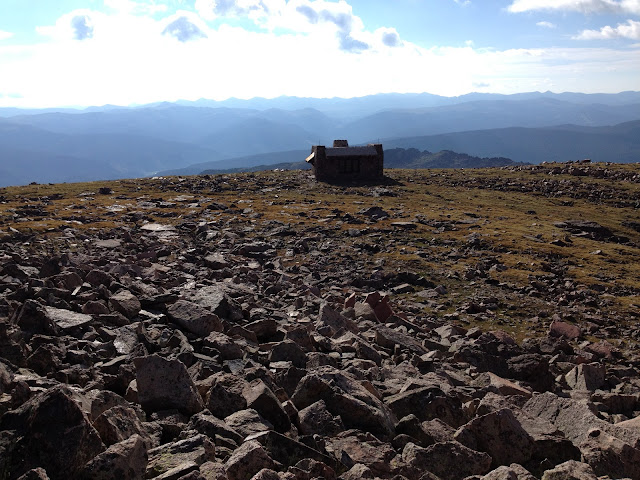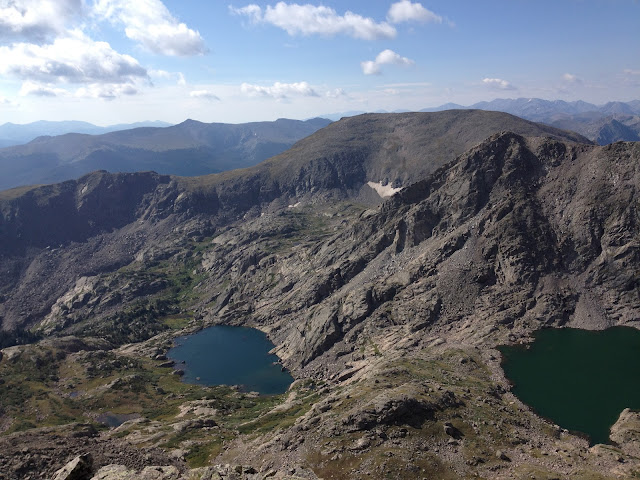I spent a week testing the Trailroc 245s in Alaska over a wide variety of trail types and conditions. In addition to assessing the overall fit, feel, utility, and durability of the shoe, my attention in testing was focused on whether this would be an appropriate racing shoe for some of the longer, rougher trail races that I do where more grip and rock protection may be needed. In the past I have used the Roclite 285 for this purpose, but if the Trailroc 245 lives up to my hopes of being a more suitable racing shoe - lighter, lower to the ground, and more comfortable over long runs - I would gladly use it in some of the races where the lighter range of shoes does not provide the protection needed.
My review of the Inov-8 Trailroc 255s with focus on their use as a mountain training shoe can be found here: Inov-8 Trailroc 255 Review
Stock Photo of the Trailroc 245s - photo stolen from the Internet.
The Trailroc 245 shoes initially sparked my interest because they appeared to be a more rugged trail shoe built on many of the same principles as the f-lite 195 that I've been a huge fan of and have used extensively for both trail and road races. Some extra weight is sacrificed for the addition of a fully lugged outsole designed for rough trails, a rock plate for foot protection, and a slightly beefier midsole construction. These features all play to the advantage of the Trailroc 245 for being capable of handling poor and variable trail conditions better than the f-lite 195 or its' Inov-8 cousins, the f-lite 230 and X-Talon 190. The use of the anatomic last in this shoe also gives it potential for better comfort over a higher number of miles than the performance last used in the above mentioned shoes, and the 1-Arrow midole design means that the shoe retains the low heel to toe drop found in the f-lite 195 and X-Talon 190.
During my time in Alaska I put approximately 70 miles on the Trailroc 245s over a wide variety of trail conditions: dry hardpack, loose gravel and scree, sharp talus, slick packed mud, deep boggy mud, wet rocks and roots, packed snow, snow-dusted rock, wet grassy slopes, and standing water. In almost all of these conditions, the shoes performed admirably. In only a few fairly isolated cases would I have much preferred a different type of shoe to handle the terrain.
Before I get into the evaluation of the shoes over the different terrain types, it's worth noting that the sizing of the Trailroc 245 seems nearly identical to that of the other Inov-8 models I've used (f-lite 195, f-lite 230, X-Talon 190, Roclite 285, Road-X Lite 155, and Roclite 312 GTX). In my review of the Trailroc 255 I noted that the sizing felt slightly smaller than these other models, but this is not the case with the 245.
Below, my Trailroc 245s are shown ready to embark on their first run through the rainy expanses of the grassy fields and mud flats of the Alaska coast.
The advertising I've seen for the shoes seems to indicate that they were designed with more "American" trail conditions in mind than many of Inov-8's other models which have their roots in the terrains commonly found in fell running. Based on my experience, the shoes performed the best on both packed and loose dirt, dry and wet rocks, dry and wet grass, and some packed mud. The shoes also performed exceptionally well on uneven and abrasive terrain where the thick rubber lugs, rock plate, and midsole cushioning worked together to provide a huge amount of protection in a comparatively lightweight shoe. The outsoles don't have the level of grip required to truly control some terrains such as loose mud and snow as well as the X-Talon, Bare-Grip or Mudclaw models, but they act as a good intermediate to handle many of the variable conditions well.
The photo below shows the print of a bear next to the print of my Trailroc 245. The bear could probably squeeze into a size 6, but it looks like he would need some extended widths.
When running through standing water and streams running down the middle of the rocky trails during some of the heavier rain that I experienced, the shoes seemed to drain and dry just as well as the f-lite or X-Talon models. In comparison to other brands of trail shoes, I consider these to be superior to most in terms of how well they drain.
The picture below shows an example of some of the rainy and wet conditions the shoes experienced. The creek running through the foreground of the picture is actually the trail.
The overall feel of the shoes was very impressive, with the anatomic last providing a very comfortable outline for the foot box. Although I have not done any runs longer than 20 miles in these shoes to date, I have no reason to doubt that they would remain comfortable over longer distances. As I mentioned before, the padding in the midsole and the protection of the rock plate worked very well to keep the potential for foot bruising to a minimum while still providing for a decent level of ground feel and flexibility. The light weight relative to some similar competing shoe models is truly impressive considering the amount of underfoot structure that is included.
While I was in Alaska, I ran the Lost Lake Run, which is a ~15.5 mile trail race through the mountains of the Kenai Peninsula near Seward. I'll cover the details of the race in a separate report, but in leading up to the race I was unsure whether I would prefer to run this race in the Trailroc 245s or the X-Talon 190s. In the end, I chose to race in the X-Talon 190s and feel that I made the right decision simply due to the weight reduction granted in those shoes. In the future, I plan to use the Trailroc 245 for some marathon and longer distance trail races, especially on courses with rough and variable terrain.
Below is the "after" picture of the shoes with the remnants of a week in Alaska all over them.



































